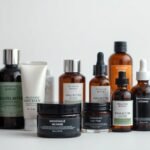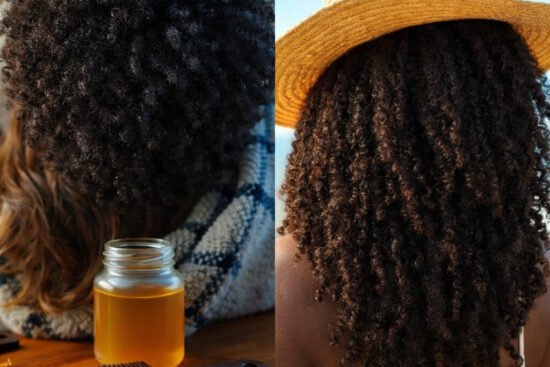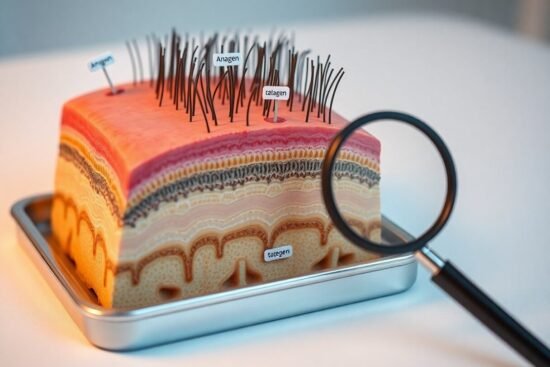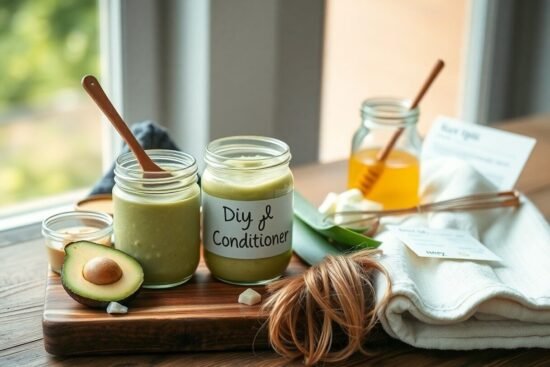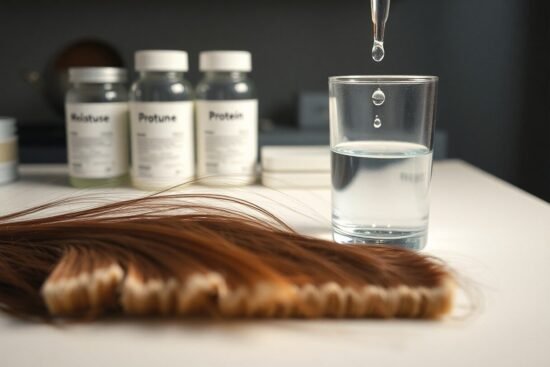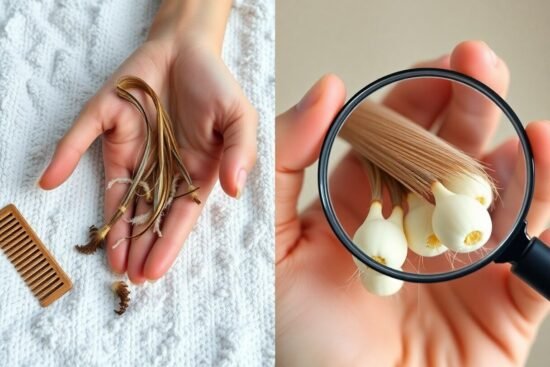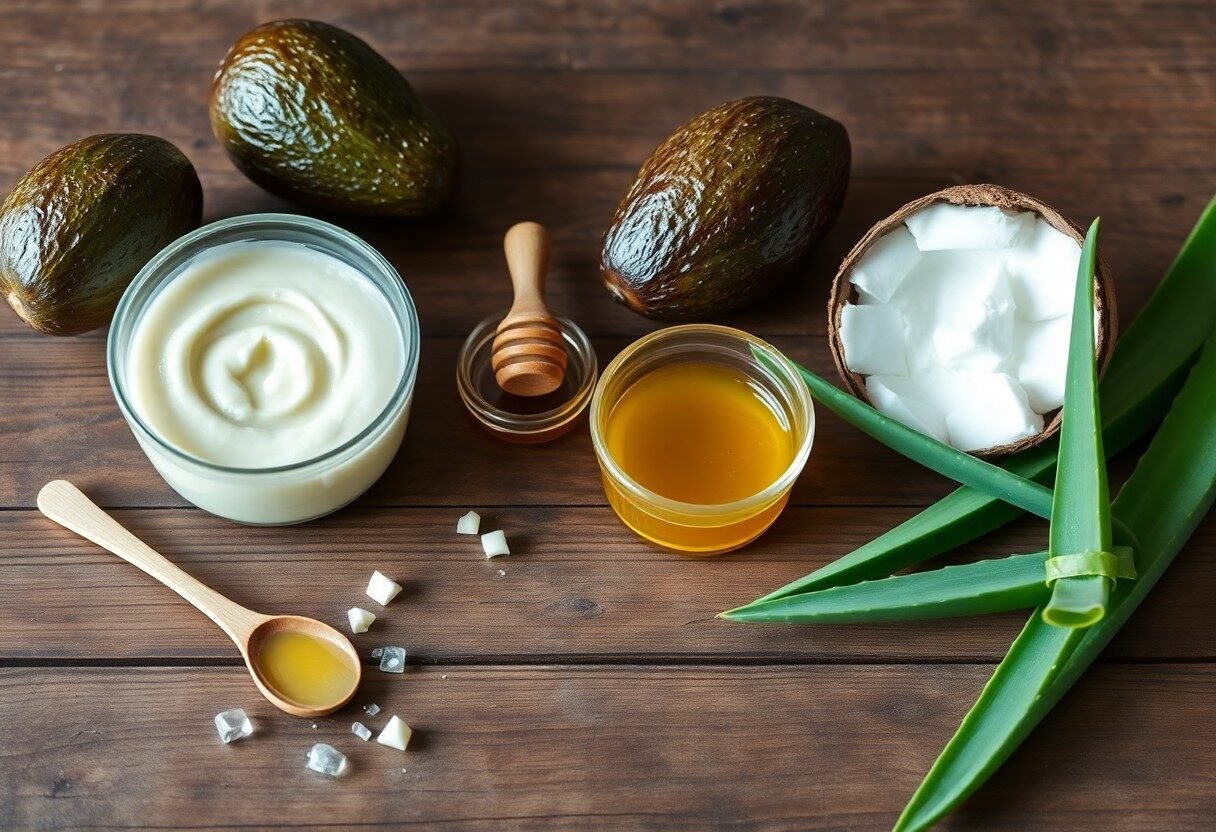
Most of us often overlook the importance of proper hair care, leading to dryness and stunted growth. In this blog post, I will share effective DIY hair mask recipes using natural ingredients that can enhance moisture and promote growth. By incorporating these masks into your routine, you can nourish your hair while avoiding harsh chemicals. I’ll guide you through simple yet powerful recipes that utilize common ingredients, ensuring you can easily pamper your hair at home. Let’s examine the world of natural hair care together!
Key Takeaways:
- Natural ingredients like avocado, coconut oil, and honey can provide intense moisture and nourishment for hair.
- Eggs are rich in protein and can promote hair growth while strengthening strands.
- Aloe vera is beneficial for scalp health and can soothe irritation while adding hydration to hair.
- Essential oils, such as peppermint and rosemary, can stimulate hair follicles and potentially enhance growth.
- Mixing ingredients in a DIY hair mask allows for customization based on specific hair needs and types.
- Consistency is key; applying hair masks once a week can yield the best results for moisture and growth.
- Always perform a patch test to avoid allergic reactions before applying new ingredients to the scalp or hair.

The Science of Hair Health
Understanding hair health involves stepping into its complex structure and the biological processes that govern its condition. Each strand consists primarily of a protein called keratin, alongside moisture, lipids, and other vital nutrients. Hair growth occurs in cycles, where the anagen phase (growth phase) can last several years, followed by the catagen and telogen phases, which are vital for maintaining hair turnover. Proper nutrition and care are fundamental to support these cycles, ensuring that hair remains vibrant and strong.
The Role of Moisture in Hair Structure
Moisture is vital for maintaining hair elasticity and strength. Without adequate hydration, hair becomes brittle, leading to breakage and split ends. The outer layer, or cuticle, comprises overlapping scales, which open and close based on moisture levels. Hydrated hair reflects light better and appears shinier, whereas dehydrated hair often looks dull and lifeless. Regular moisture replenishment is vital for vibrant and healthy hair.
How Natural Ingredients Impact Growth
Natural ingredients play a significant role in promoting hair growth by providing vital nutrients that support follicle health. Ingredients like coconut oil, rich in medium-chain fatty acids, penetrate the hair shaft and reduce protein loss, strengthening it. Likewise, vital oils like rosemary and peppermint have been shown in studies to enhance blood circulation to the scalp, stimulating growth and improving overall hair density.
In addition to oils, ingredients like aloe vera and honey nourish and soothe the scalp, creating an optimal environment for hair follicles to thrive. Vitamins and minerals found in natural sources, such as biotin from avocados and iron from spinach, further contribute to robust growth. By incorporating these nutrient-dense components into your DIY hair masks, you’re not only treating your hair but also feeding it the sustenance it needs to flourish, resulting in long, healthy tresses over time.
Kitchen Ingredients That Transform Hair
Utilizing common kitchen ingredients can revolutionize your hair care routine. Ingredients like avocado, honey, and coconut oil are not just culinary delights; they are also powerful allies in achieving healthier, shinier, and more manageable hair. These natural ingredients offer healing properties that can address a variety of hair concerns, from dryness to dullness, elevating your hair care game without breaking the bank.
Avocado: The Superfood for Shine and Strength
Avocado is packed with crucial fatty acids, vitamins, and antioxidants, making it a superfood for your hair. Its rich, creamy texture helps to deeply hydrate strands, leaving your hair feeling softer and looking shinier. With the presence of Vitamin E, it promotes scalp health, creating the perfect environment for hair growth.
Honey: Nature’s Humectant for Moisture
Honey is a natural humectant, drawing moisture to your hair and keeping it hydrated. Its rich composition allows it to lock in moisture, making dry, dull hair feel revitalized and bouncy. Honey also possesses antibacterial properties, which can help maintain a healthy scalp environment, promoting better hair growth over time.
Incorporating honey into your DIY hair masks is effortless and beneficial. When mixed with carriers like olive oil or yogurt, it enhances your mask’s moisturizing capabilities. The presence of vitamins and trace minerals in honey nurtures the hair follicles, while its sticky consistency helps create a protective barrier, resulting in healthier, hydrated strands that shine with vitality.
Coconut Oil: The Ultimate Nourisher
Coconut oil is renowned for its deep nourishing properties, making it a staple in hair care routines. Its unique composition allows it to penetrate the hair shaft effectively, providing intense moisture and combating dryness. Packed with lauric acid, coconut oil also offers antibacterial benefits, which can help reduce scalp issues and lead to healthier hair growth.
Applying coconut oil as a pre-wash treatment can completely transform your hair. Not only does it provide an excellent moisture barrier, but it also reduces protein loss when washing. For damaged hair, a warm coconut oil treatment can revive strands, making them more resilient against future damage. With consistent use, you’ll notice stronger hair that is less prone to breakage and split ends.
Crafting the Perfect Hair Mask
Creating a customized hair mask can transform your hair care routine, ensuring you target specific needs. Start by blending natural ingredients tailored to your hair type while considering moisture levels and growth potential. The goal is to harmonize ingredients that provide nourishment, hydration, and repairs. Tailoring your mask can elevate your hair game, bringing out its natural beauty.
Balancing Ingredients for Different Hair Types
Each hair type requires different considerations for optimal results. Fine hair benefits from light oils like argan or jojoba, while thick hair needs heavier oils like coconut or avocado. Curly hair requires humectants like honey to retain moisture, and damaged hair responds best to protein-rich ingredients like eggs. Adjust the ratios and ingredients to create a tailored solution for your specific needs.
- Fine Hair: Choose light oils and avoid heaviness.
- Thick Hair: Use rich, nutrient-dense oils.
- Curly Hair: Incorporate humectants for hydration.
- Damaged Hair: Focus on protein-rich ingredients.
- This will enhance overall hair vitality.
Step-by-Step Guide to DIY Mask Creation
Embarking on a DIY hair mask journey is straightforward and satisfying. Begin with a base that suits your hair type, then add complementary ingredients. Mix until smooth, and ensure even distribution during application. Allow the mask to sit for a specific duration, typically 20 to 30 minutes, before rinsing thoroughly. This uncomplicated process opens the door to endless hair care possibilities.
Step-by-Step Guide to DIY Mask Creation
| Step | Description |
| 1. Select Ingredients | Pick your base and additional components based on your needs. |
| 2. Mix | Blend all ingredients in a bowl until you achieve a smooth consistency. |
| 3. Application | Evenly apply the mask starting from roots to tips, ensuring full coverage. |
| 4. Wait | Let the mask sit for 20-30 minutes for optimal absorption. |
| 5. Rinse | Thoroughly wash your hair with water and a gentle shampoo. |
Following this straightforward guide ensures you execute each step without hassle. By choosing the right ingredients and allowing ample time for absorption, the mask works its magic to enhance your hair’s health and vitality. Experiment with various ingredient combinations and develop a hair mask that becomes a favorite in your hair care regimen. Consider recording your different recipes and results to identify what works best for you.
Application Techniques for Maximum Benefits
Getting the most out of your DIY hair masks involves more than just the right ingredients; it also requires proper application techniques. To ensure even coverage and absorption, start by dividing your hair into sections. This makes it easier to apply the mask thoroughly from roots to tips. Use your fingertips or a brush for even distribution, allowing the formula to penetrate deeply into each strand. For enhanced effectiveness, I often recommend massaging the scalp gently to stimulate blood flow, promoting hair growth. Wrapping your hair in a warm towel can also help the mask work wonders, locking in moisture.
Prepping Hair for Treatment
Prior to applying any mask, preparing your hair can significantly enhance the results. I usually like to start with clean, damp hair as it allows better penetration of the natural ingredients. Briefly washing your hair removes product buildup and opens up the cuticles, creating a welcoming environment for your mask. Depending on your specific hair type or the mask you’re using, you might even want to detangle your locks gently, making sure there are no knots in the way of those nourishing elements.
Optimal Duration and Frequency of Use
How long you leave a hair mask on and how often you apply it can vary depending on your hair’s needs and the ingredients involved. Generally, I find that leaving a mask on for 30 to 60 minutes offers sufficient time for the ingredients to work effectively. For deeply nourishing masks, once a week is often ideal. However, for lighter treatments, you could use them up to twice a week without overloading your hair.
The ideal duration for a hair mask really depends on the specific ingredients and your hair’s condition. For instance, protein-based masks may require a shorter application time—around 20 minutes—to avoid potential protein overload. Conversely, moisturizing masks, laden with oils or honey, can be left on longer for maximum hydration. I’ve found that adjusting the frequency based on how my hair feels—thirsty one week and healthy the next—helps me tailor these treatments for ongoing care. Listening to your hair will always lead you to the best results.
Troubleshooting Common Hair Issues
Addressing common hair problems can feel overwhelming, but natural DIY hair masks can provide targeted solutions. I’ve found that pairing the right ingredients with your specific hair issues can yield transformative results. Often, the solutions lie in understanding what your hair needs and adjusting your DIY recipes accordingly. From dryness and fragility to thinning hair challenges, let’s explore how to effectively tackle these concerns with easy-to-make hair masks.
Addressing Dryness and Fragility
Dry and fragile hair often indicates a lack of moisture and nourishment. To combat this, I recommend using ingredients like avocado, honey, and coconut oil in your masks. These components boast rich fatty acids and natural humectants that deeply hydrate and strengthen hair strands. For best results, apply the mask weekly and follow up with a gentle, sulfate-free shampoo.
Combating Thinning Hair and Scalp Health
Thinning hair and poor scalp health can leave you feeling frustrated. Incorporating ingredients like castor oil, necessary oils, and green tea into your masks can stimulate growth and improve circulation. I’ve found that massaging these masks into the scalp not only nourishes the follicles but also enhances absorption. Using these remedies two to three times a week can progressively show improved thickness and vitality in your hair.
For thinning hair, focusing on scalp health is necessary. Stress, hormonal imbalances, and even diet can contribute to hair loss. Castor oil is rich in ricinoleic acid, which encourages blood circulation to the scalp, promoting hair growth. Essential oils like rosemary and peppermint can invigorate hair follicles, leading to thicker hair over time. I often blend a few drops of these oils with a carrier oil for optimal benefits. Additionally, including vitamins A, C, and E in your diet can further enhance scalp health, providing necessary nutrients that support hair growth from the inside out.
Final Words
Presently, I encourage you to explore the world of DIY hair masks using natural ingredients to enhance moisture and promote growth in your hair. By incorporating items like avocado, honey, and coconut oil into your homemade treatments, you can nourish your strands effectively. I’ve discovered that you can customize these masks according to your hair’s unique needs, allowing for tailored care and improved results. Embrace the power of nature in your hair care routine, and enjoy the benefits of healthy, vibrant locks.
FAQ
Q: What are the benefits of using DIY hair masks with natural ingredients?
A: DIY hair masks made from natural ingredients can provide numerous benefits for your hair, including deep moisture retention, improved shine, increased elasticity, and reduced breakage. Ingredients like honey, avocado, and coconut oil are known to nourish and hydrate hair, promoting overall health and growth.
Q: Which natural ingredients are best for hair moisture?
A: Some of the best natural ingredients for moisturizing hair include aloe vera, coconut milk, olive oil, honey, and shea butter. These ingredients are rich in vitamins and fatty acids, which can help to hydrate dry strands and maintain moisture levels within the hair.
Q: How often should I use a DIY hair mask for optimal results?
A: The frequency of using a DIY hair mask can depend on your hair type and condition. Generally, once a week is a good starting point. However, if your hair is particularly dry or damaged, you may choose to apply a mask every 3-5 days until you see improvement.
Q: Can I use necessary oils in my DIY hair masks?
A: Yes, necessary oils can be a great addition to DIY hair masks. Oils like rosemary, lavender, and peppermint can enhance the effectiveness of your mask by promoting circulation, stimulating hair growth, and providing additional nourishment. Just be sure to dilute them with carrier oils to avoid skin irritation.
Q: How do I apply a DIY hair mask for the best results?
A: To apply a DIY hair mask effectively, first, ensure your hair is clean and slightly damp. Divide your hair into sections and apply the mask evenly from the roots to the tips. Use a wide-toothed comb to distribute the product, then cover your hair with a shower cap or towel. Leave the mask on for 30 minutes to an hour before rinsing thoroughly with warm water.
Q: Are there any ingredients I should avoid in DIY hair masks?
A: Yes, you should avoid using ingredients that are known to cause buildup or irritation, such as synthetic fragrances, alcohol, and excessive amounts of citrus juice. It’s also a good idea to test any new ingredient on a small skin area before applying it to your hair to ensure you don’t have an adverse reaction.
Q: Can DIY hair masks help with hair growth?
A: Many DIY hair masks can promote hair growth by providing necessary nutrients and improving the scalp environment. Ingredients like castor oil, banana, and egg provide proteins and vitamins that can stimulate hair follicles and encourage faster growth. Regular use can lead to thicker and fuller hair over time.



